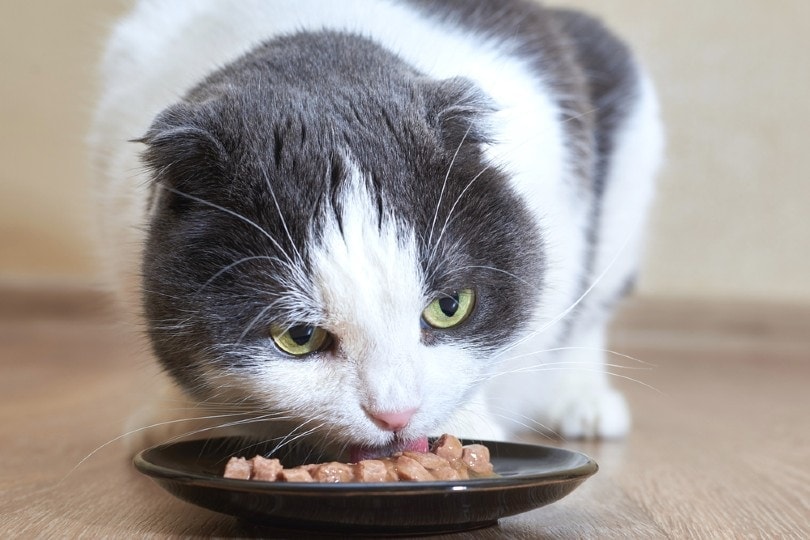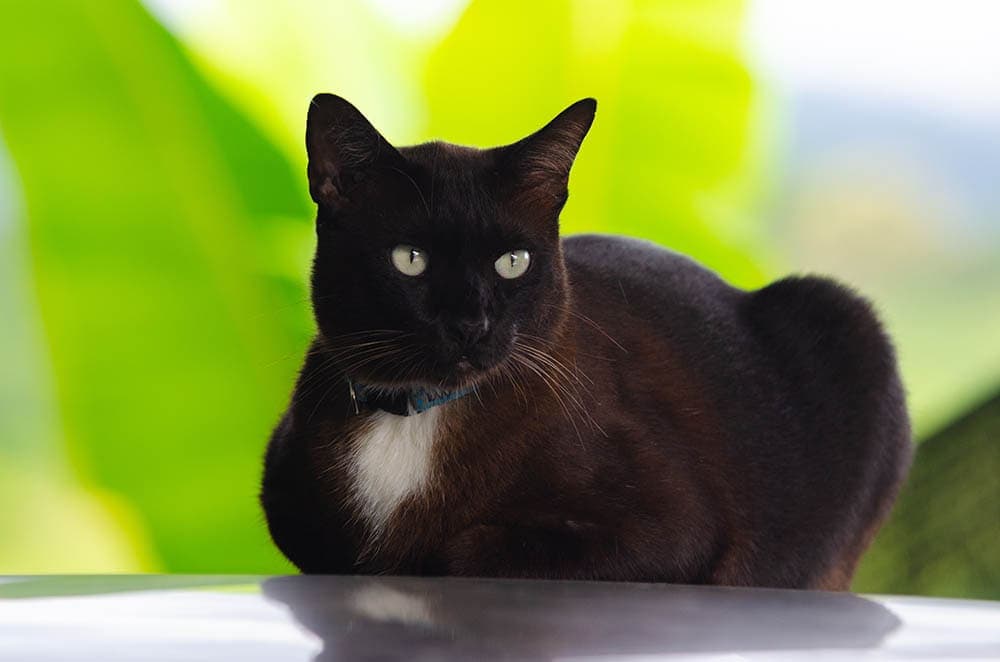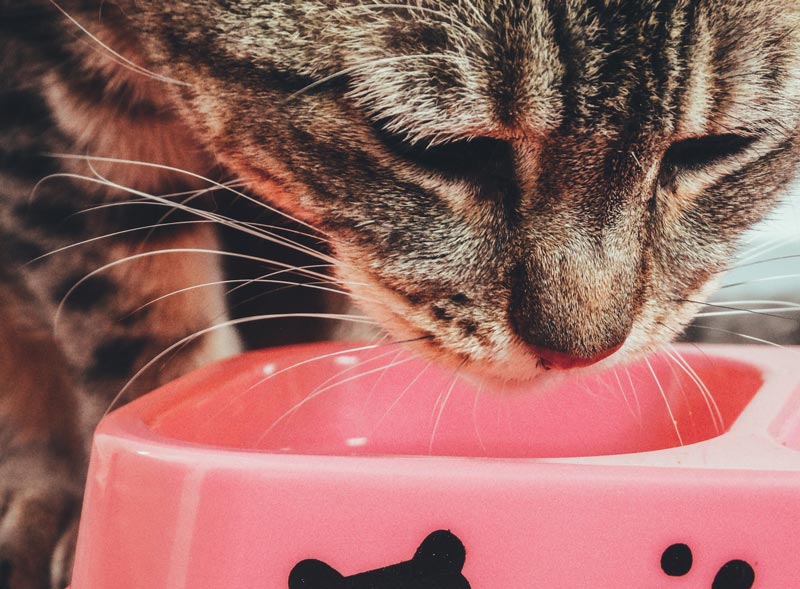Intestinal Blockage in Cats: Vet-Reviewed Signs, Causes & Treatment

Updated on
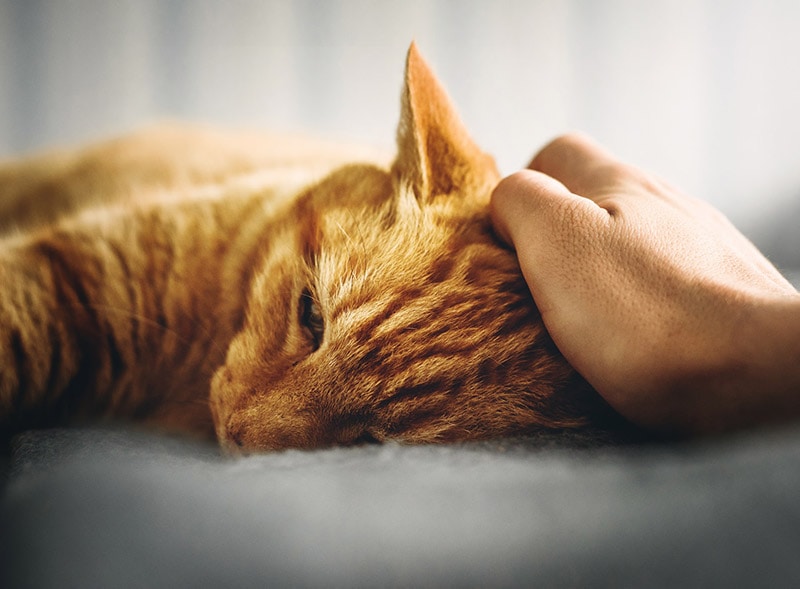
Click to Skip Ahead
As cat lovers, we try to be as cautious as possible and keep our home cat-proof, but our curious kitties sure love to exhibit those natural hunting instincts through play and will resort to various household objects to fulfill their needs. Whether it’s yarn, string, hair ties, rubber bands, ribbons, or anything else, cats will sometimes chew and even swallow what they’re playing with.
Unfortunately, this leaves our precious companions at risk of a dangerous intestinal blockage. This serious and potentially life-threatening condition must be treated promptly, so we’re going to give you a rundown of what intestinal blockage is, what can cause it, the signs to look out for, and the treatment you can expect.
What Is an Intestinal Blockage?
An intestinal blockage, also referred to as intestinal obstruction, occurs when there is either a partial or complete blockage within the intestines preventing the contents from passing through the digestive system.
While the term gastrointestinal blockage is sometimes used regarding these conditions, it’s important to note that an intestinal blockage refers to an obstruction within the intestines, while a gastrointestinal blockage refers to an obstruction anywhere within the digestive tract (esophagus, stomach, or intestines).
This is a common emergency condition that veterinarians deal with frequently. Not only can it prevent the absorption of water and nutrients and can lead to dehydration and electrolyte imbalance, but if left untreated can cause damage to the intestinal wall, cause tissue death, and may result in a bowel rupture.
Intestinal blockage can be broken down into three different categories, all of which are potentially life threatening. The categories include:

Complete Obstruction
A complete obstruction refers to a complete blockage of the intestine, preventing any contents from passing through the digestive system properly. This is often due to the cat swallowing a large object or several small objects. Clinical signs of a complete obstruction often come on quickly and become very severe. This is considered a medical emergency and the cat must be taken to a veterinarian immediately for treatment.
Partial Obstruction
Partial obstruction occurs when only part of the intestine is blocked, but some contents are still able to pass through. In the case of a partial obstruction, a cat may show similar signs to a complete blockage, or no signs at all. A partial obstruction can still cause significant damage to the intestines and can be fatal if left untreated.
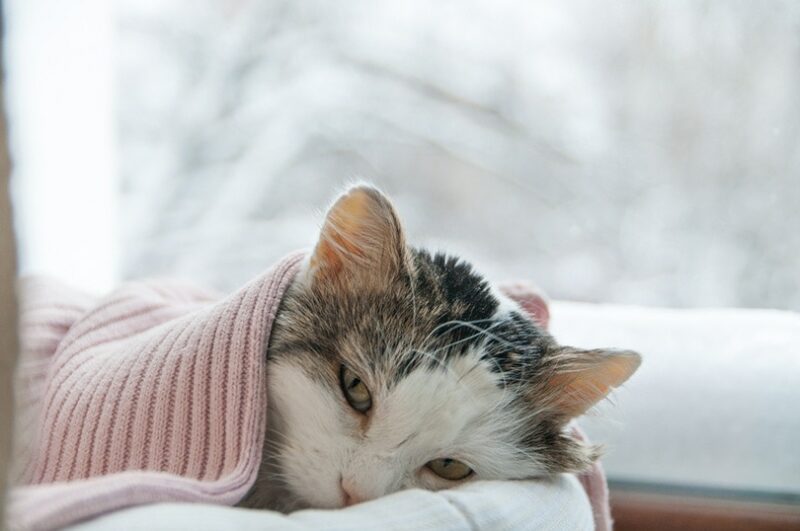
Linear Foreign Body
A linear foreign body causes a particular type of obstruction. It occurs when the cat eats something long and thin, such as ribbon, string, tinsel, dental floss, yarn, or fishing line, and one of the ends gets caught under the tongue or in the stomach. Normal movement of the GI tract will attempt to pass it through, but the linear object is anchored and causes the intestines to begin bunching up around it. This situation is extremely dangerous since the foreign body can eventually cut through the intestine and cause peritonitis which can be fatal.
What Are the Signs of Intestinal Blockage in Cats?
There are several signs associated with intestinal obstruction and depending on the type of obstruction the cat is experiencing; these signs may come on slowly or suddenly. If you notice any of the following signs or if your cat has eaten a foreign object, you should contact your veterinarian right away.
- Vomiting
- Drooling
- Regurgitation
- Lack of appetite
- Abdominal pain/swelling
- Diarrhea
- Failure to defecate.
- Straining to defecate
- Lethargy
- Changes in behavior (hiding, unusually antisocial, defensiveness)
- Weight loss
What Are the Causes of Intestinal Blockage?
Ingestion of an indigestible foreign body is the most common cause of an intestinal obstruction in our feline friends, but there are other less common causes that can obstruct the stomach or the intestine either completely or partially, including:
- Undigested hairball
- Tumor
- Pyloric stenosis
- Hernia
- Severe inflammation of the GI tract
- Intussusception
How Do I Care for a Cat With an Intestinal Blockage?
An intestinal blockage is considered a medical emergency and if you suspect your cat is suffering from one, you need to seek veterinary care right away so they can be diagnosed and treated promptly.
Diagnosis
The veterinarian will often perform a thorough physical examination and note any clinical signs they have been exhibiting. Blood and urine samples may be taken to detect any abnormalities caused by the obstruction itself and to rule out any underlying health conditions.
Diagnostic imaging such as X-rays or an ultrasound can be used to view the intestinal tract and locate any blockages that have occurred. In some cases, exploratory surgery may be recommended to diagnose and remove the blockage if the diagnostic imaging is inconclusive.

Treatment Options
Treatment for an intestinal blockage will depend on the severity and the underlying cause of the blockage. Treatment can include:
Surgery
Intestinal blockage will often require surgery under general anesthesia to remove the cause of the obstruction (foreign object, tumors, growths, hernias) and to repair any damage that occurred to the gastrointestinal tract.
Induced Vomiting
Depending on how long ago a foreign object was eaten and the type of object it was, vomiting can sometimes be induced to recover the object to prevent the intestinal blockage from occurring. This is not always successful, especially in cats compared to dogs, and there are risks of complications from induced vomiting, so this should only be performed by a licensed veterinarian if they deem it necessary.
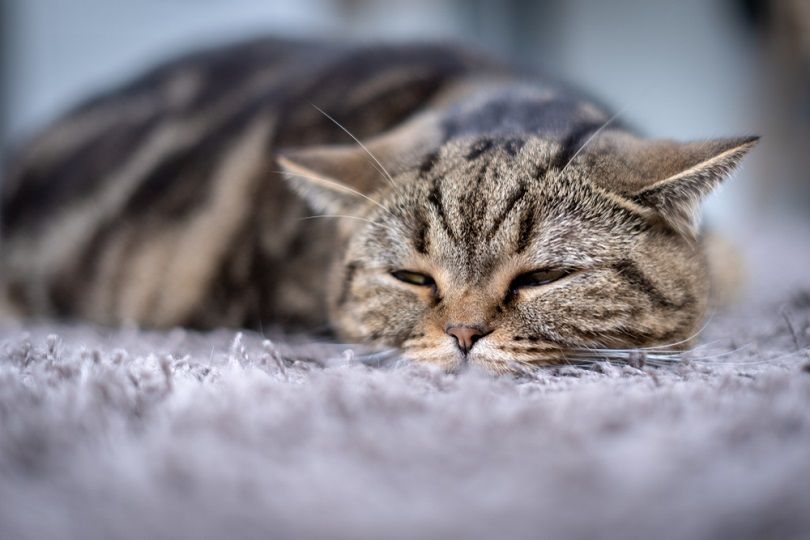
Endoscopy
In certain circumstances, your vet may suggest performing an endoscopy to remove the foreign body. In this case, a camera will be put down the esophagus to view and retrieve the object to try and avoid the intestinal blockage. Linear foreign bodies located in the intestine are rarely retrieved via endoscopy since there is a high risk of plication (bunching up) during removal.
Dietary Changes
In less severe cases, dietary changes may be implemented as “treatment” to help a smaller, non-hazardous object pass through the GI tract successfully. While this may often include imaging to track the progress of the object, the veterinarian may recommend certain changes in diet and increased water intake to help the process along. In the event of a hairball obstruction, the veterinarian will give specific dietary and lifestyle suggestions to help prevent the problem from recurring.
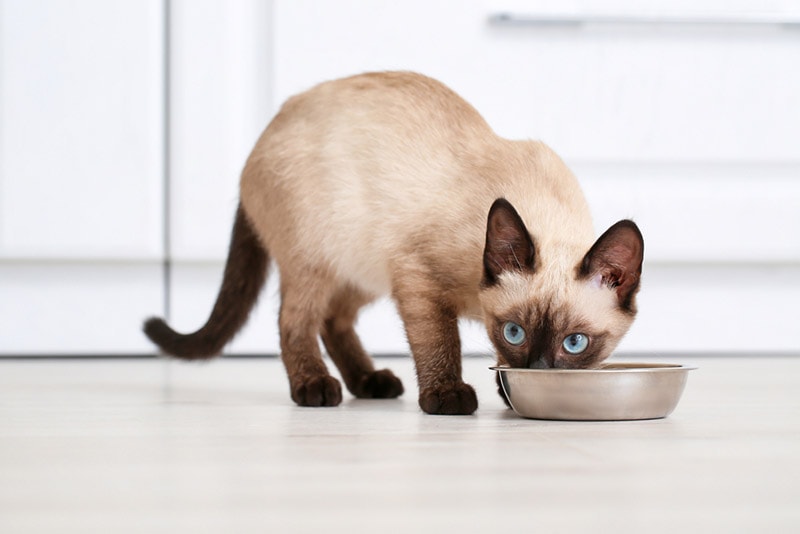
Supportive Care
IV fluids, painkillers, antibiotics, or other necessary forms of supportive care may be utilized to stabilize the cat before treatment of the obstructions itself. Following treatment, the cat will also need supportive care such as fluids, pain and/or nausea medication, and in more severe cases, a temporary feeding tube may be required for nutritional support.
FAQ
How Long Can a Cat Survive With an Intestinal Obstruction?
While it is impossible to predict if a foreign body will have life-threatening consequences, cats suffering from a partial obstruction will usually suffer from less severe signs. However any intestinal blockage is potentially fatal and survival time can vary significantly by individual. This is because any obstruction can cause significant damage to the intestines. If your cat is showing any clinical signs of an intestinal blockage, such as drooling, vomiting, lack of appetite, or straining to defecate but failure to pass stool, you need to reach out to your veterinarian immediately as they will need treatment right away.
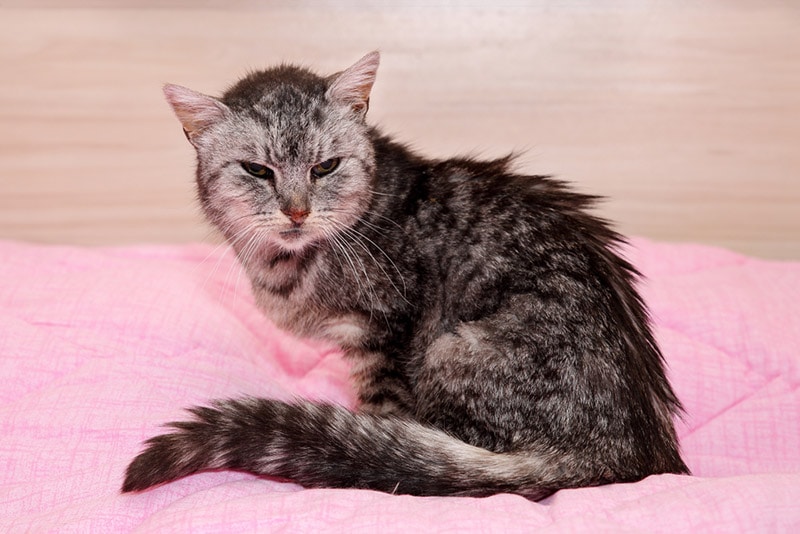
Can a Cat Pass an Intestinal Obstruction on Its Own?
There are some cases when an ingested foreign object can be passed through the GI tract and into the stool, but this is not something you want to risk by waiting it out at home. You should still seek prompt care from a veterinarian where they will thoroughly assess the condition, as damage to the intestines can still occur.
Very careful monitoring in hospital or at home and X-rays or ultrasounds may be necessary to keep track of the progress as the object moves through the digestive system to ensure no intervention is needed.
Conclusion
Intestinal blockage in cats is a very serious medical condition that can be fatal even with the right treatment if it is detected too late. There are three types of intestinal blockages, including complete and partial obstructions and linear foreign bodies, all of which can be life threatening and require prompt treatment.
While there can be several causes of intestinal obstruction, the most common cause is ingestion of a foreign body. Never hesitate to reach out to your veterinarian if your cat swallows a foreign object. If your cat is showing any signs of a blockage, you need to seek veterinary care right away.
Featured Image Credit: Alexander Andrews, Unsplash



